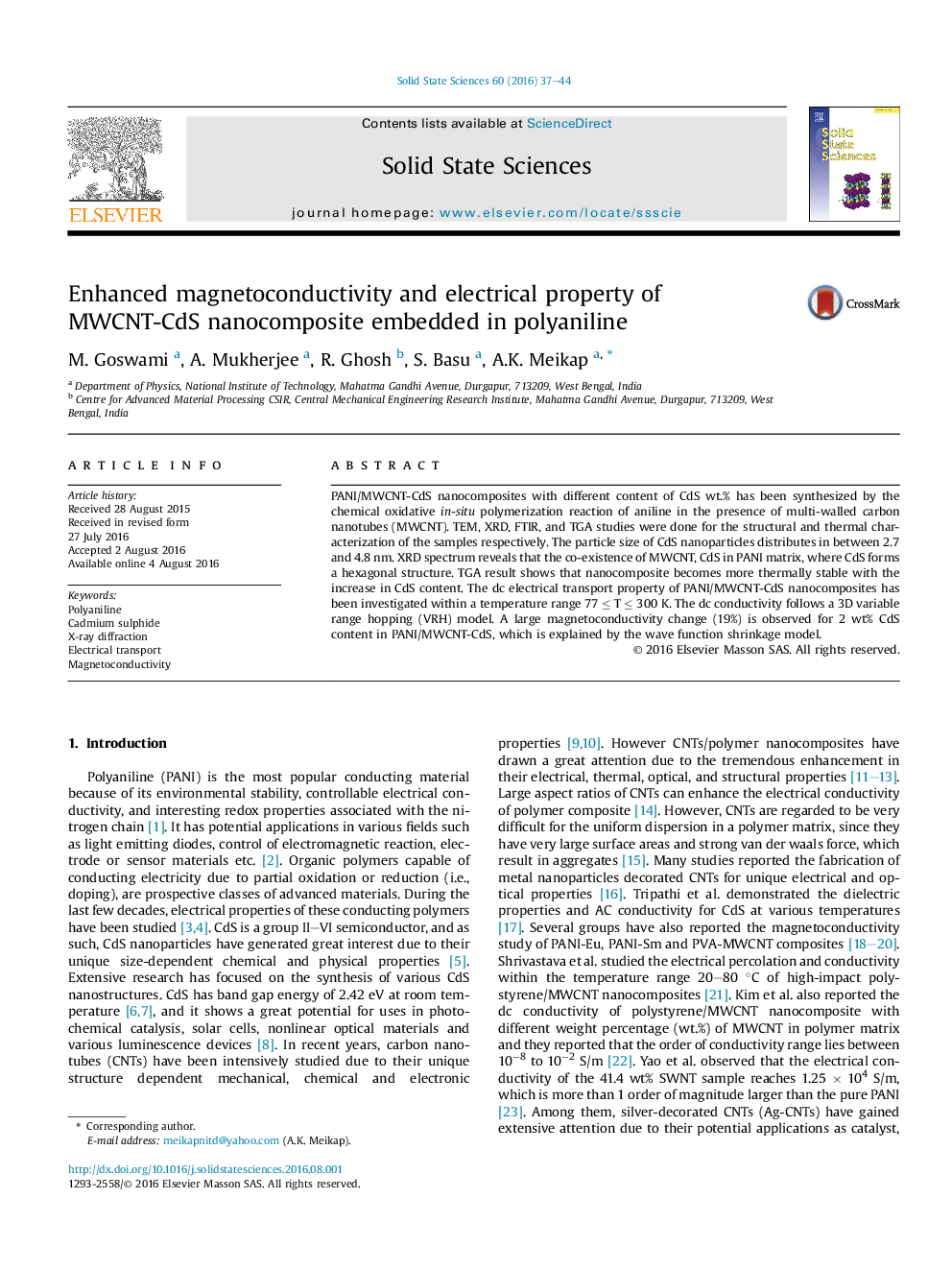| کد مقاله | کد نشریه | سال انتشار | مقاله انگلیسی | نسخه تمام متن |
|---|---|---|---|---|
| 1503938 | 1510962 | 2016 | 8 صفحه PDF | دانلود رایگان |

• The dc conductivity of the samples increases with increasing temperature.
• The dc conductivity follows a 3D variable range hopping model.
• A large magnetoconductivity change (19%) is observed for 2 wt% CdS at 300 K.
• Localization length increases with increasing wt% of CdS.
• Hopping range decreases with increasing temperature.
PANI/MWCNT-CdS nanocomposites with different content of CdS wt.% has been synthesized by the chemical oxidative in-situ polymerization reaction of aniline in the presence of multi-walled carbon nanotubes (MWCNT). TEM, XRD, FTIR, and TGA studies were done for the structural and thermal characterization of the samples respectively. The particle size of CdS nanoparticles distributes in between 2.7 and 4.8 nm. XRD spectrum reveals that the co-existence of MWCNT, CdS in PANI matrix, where CdS forms a hexagonal structure. TGA result shows that nanocomposite becomes more thermally stable with the increase in CdS content. The dc electrical transport property of PANI/MWCNT-CdS nanocomposites has been investigated within a temperature range 77 ≤ T ≤ 300 K. The dc conductivity follows a 3D variable range hopping (VRH) model. A large magnetoconductivity change (19%) is observed for 2 wt% CdS content in PANI/MWCNT-CdS, which is explained by the wave function shrinkage model.
At room temperature, a large magnetoconductivity change (20%) has been observed for 2 wt% CdS content in PANI/MWCNT-CdS, which is explained by the wave function shrinkage model.Figure optionsDownload as PowerPoint slide
Journal: Solid State Sciences - Volume 60, October 2016, Pages 37–44